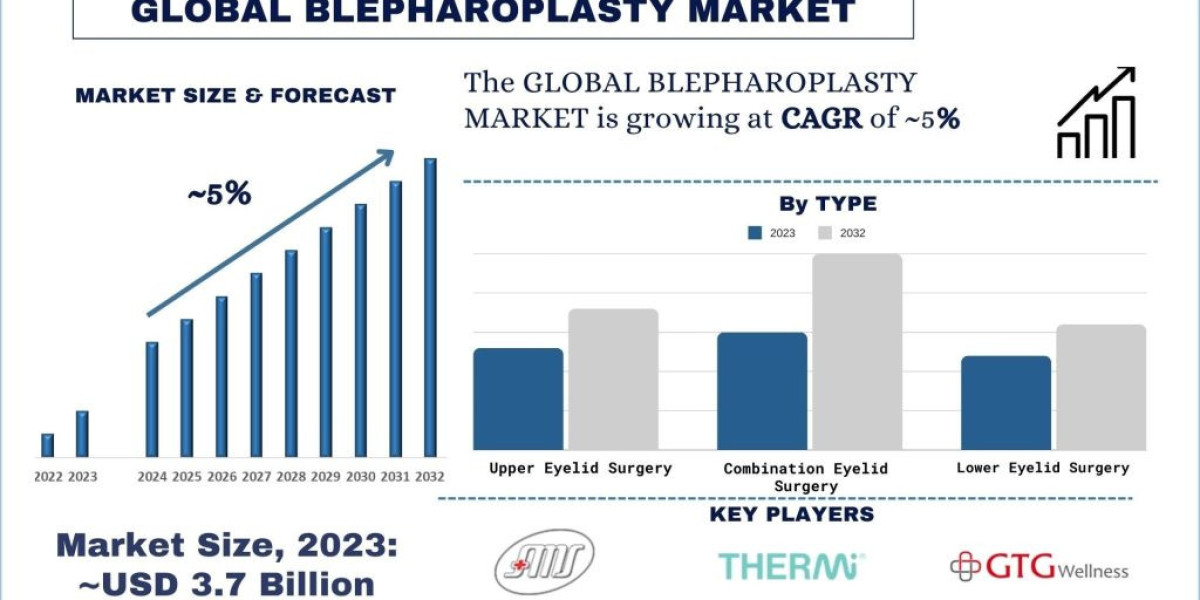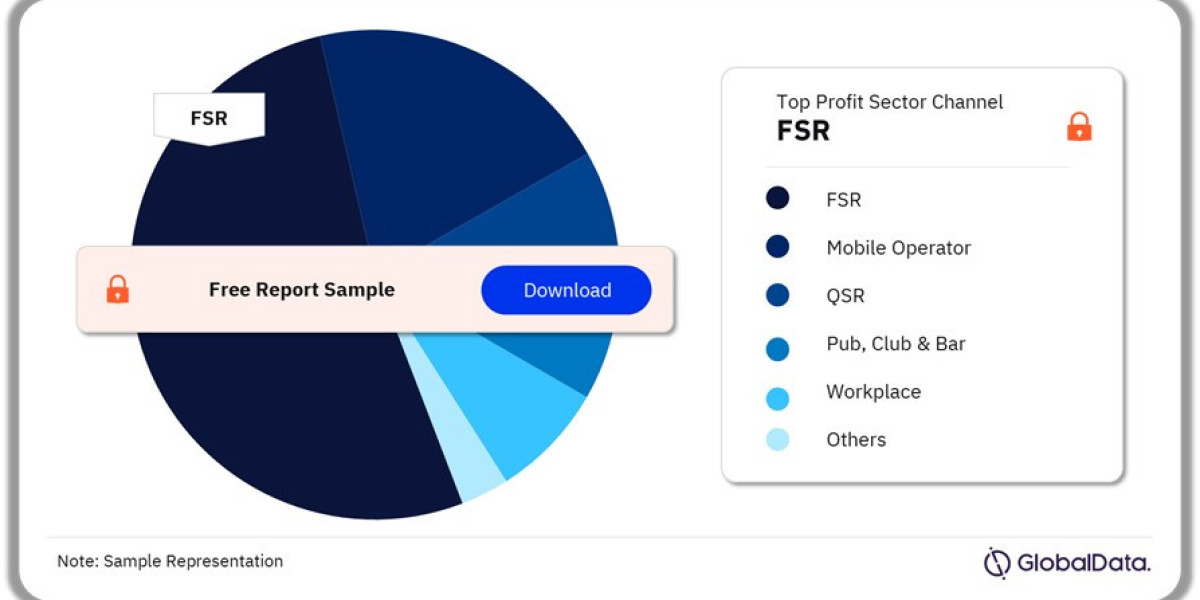According to the UnivDatos Market Insights Analysis, the surge in elderly population and the rise in demand for aesthetic solutions will drive the global scenario of the Blepharoplasty market. As per their “Blepharoplasty Market” report, the global market was valued at USD 3.7 Billion in 2023, growing at a CAGR of about 5% during the forecast period from 2024 - 2032.
Technological advancements have played a crucial role in driving innovation and growth in the Blepharoplasty market and it continues to drive innovation and growth in the Blepharoplasty market, offering patients safer, more effective, and more personalized treatment options. Some key technological advancements are:
1. Minimally Invasive Techniques
One of the most significant advancements in blepharoplasty is the development of minimally invasive techniques. These methods aim to reduce the extent of incisions and tissue disruption, leading to faster recovery times, minimal scarring, and reduced postoperative discomfort.
· Transconjunctival Blepharoplasty: This technique involves making incisions inside the lower eyelid, eliminating visible scarring. It is particularly beneficial for younger patients with good skin elasticity who need fat removal or repositioning without extensive skin removal.
· Endoscopic Blepharoplasty: Utilizing an endoscope, a small camera device, surgeons can perform the procedure with greater precision through smaller incisions. This method allows for better visualization of the surgical area, enhancing accuracy and reducing recovery time.
Request Free Sample Pages with Graphs and Figures Here - https://univdatos.com/get-a-free-sample-form-php/?product_id=60600
2. Laser-Assisted Blepharoplasty
Laser technology has revolutionized blepharoplasty by providing a more precise and controlled method for tissue cutting and coagulation. Laser-assisted blepharoplasty offers several advantages over traditional surgical techniques:
· Reduced Bleeding and Swelling: The laser's ability to coagulate blood vessels as it cuts reduces intraoperative bleeding and postoperative swelling, leading to faster healing and less discomfort for patients.
· Enhanced Precision: Lasers allow for extremely precise incisions, which are crucial in delicate areas like the eyelids. This precision minimizes damage to surrounding tissues and results in better aesthetic outcomes.
· Faster Recovery: The reduced trauma to tissues and lower incidence of bleeding contribute to a quicker recovery process, allowing patients to resume their normal activities sooner.
3. Radiofrequency and Ultrasound Technologies
Non-surgical approaches using radiofrequency (RF) and ultrasound technologies have gained popularity for their ability to tighten and rejuvenate the skin around the eyes without extensive surgery.
· Radiofrequency Devices: RF energy heats the deeper layers of the skin, stimulating collagen production and tightening the skin. This method is effective for patients with mild to moderate skin laxity and can be used in conjunction with surgical blepharoplasty for enhanced results.
· Ultrasound Technology: Ultrasound energy also promotes collagen production and skin tightening. Devices like Ultherapy use focused ultrasound waves to target deeper skin layers, providing a lifting and tightening effect that can complement blepharoplasty.
4. Advanced Imaging and Simulation
Preoperative planning has been significantly improved with the advent of advanced imaging techniques and simulation software. These technologies allow for detailed surgical planning and help manage patient expectations by providing a visual representation of the potential outcomes.
· 3D Imaging: High-resolution 3D imaging systems create detailed models of the patient's facial anatomy, enabling surgeons to plan the procedure with greater accuracy. This technology ensures that the surgical approach is tailored to the individual’s unique facial structure.
· Simulation Software: Simulation tools allow patients to see a visual forecast of their post-surgery appearance. By setting realistic expectations, this technology enhances patient satisfaction and aids in the decision-making process.
5. Improved Anesthesia Methods
Advancements in anesthesia techniques have made blepharoplasty safer and more comfortable for patients. Enhanced methods of pain management and sedation reduce the risks associated with general anesthesia and improve the overall surgical experience.
· Local Anesthesia with Sedation: Many blepharoplasty procedures can now be performed under local anesthesia combined with mild sedation. This approach minimizes risks and allows for a quicker recovery compared to general anesthesia.
· Tumescent Anesthesia: This technique involves the injection of a dilute local anesthetic solution into the eyelid tissues, providing prolonged pain relief and reducing bleeding during surgery. It enhances patient comfort both during and after the procedure.
Related Reports-
Autism Spectrum Disorder Market: Current Analysis and Forecast (2024-2032)
Dermatomycosis Market: Current Analysis and Forecast (2024-2032)
6. Integration of AI and Machine Learning
The integration of artificial intelligence (AI) and machine learning in blepharoplasty is an emerging trend that promises to further enhance surgical precision and outcomes.
· Predictive Analytics: AI algorithms can analyze patient data to predict surgical outcomes, helping surgeons to identify the best surgical approach for each individual.
· Robotic Assistance: While still in its early stages, robotic-assisted surgery guided by AI has the potential to perform highly precise movements, reducing human error and improving the consistency of surgical results.
Conclusion
Technological advancements in blepharoplasty have significantly transformed the procedure, making it safer, more effective, and capable of delivering superior aesthetic and functional outcomes. From minimally invasive techniques and laser-assisted surgeries to the use of radiofrequency, ultrasound technologies, and advanced imaging, these innovations continue to push the boundaries of what is possible in eyelid surgery. As technology evolves, we can expect further enhancements that will continue to improve patient experiences and outcomes in blepharoplasty.



